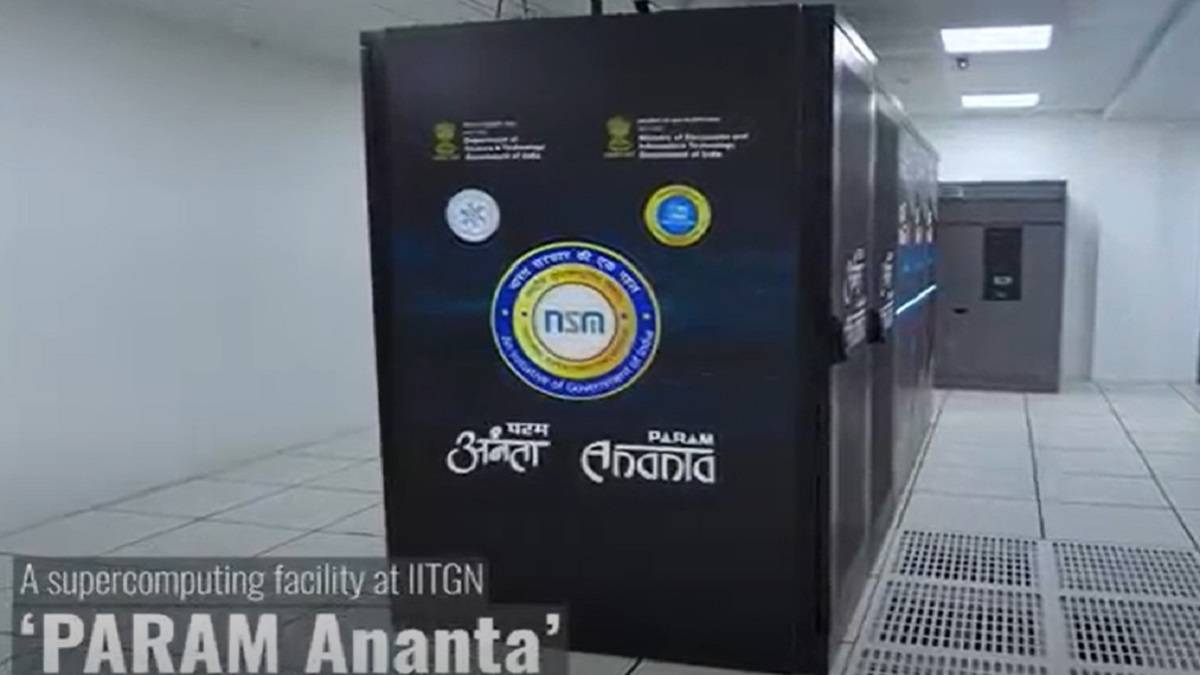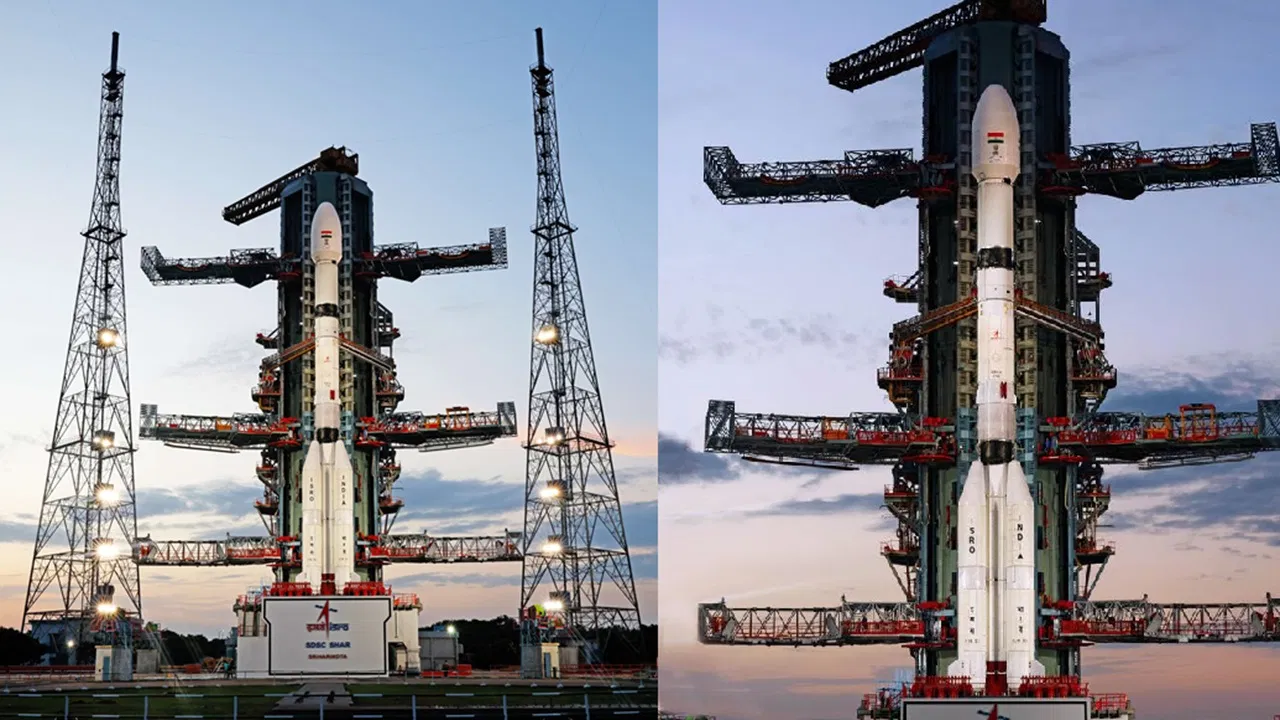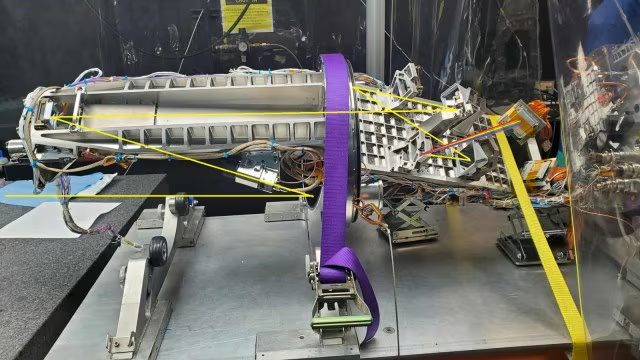Description

Disclaimer: Copyright infringement not intended.
Context
- Recently, PARAM ANANTA, a state-of the art Supercomputer at IIT Gandhinagar was dedicated to the nation under National Supercomputing Mission (NSM).
Details
- PARAM ANANTA system is based on Direct Contact Liquid Cooling technology to obtain a high power usage effectiveness and thereby reducing the operational cost.
- Multiple applications from various scientific domains such as Weather and Climate, Bioinformatics, Computational Chemistry, Molecular Dynamics, Material Sciences, Computational Fluid Dynamics etc. have been installed on the system for the benefit of researchers. This high end computing system will be a great value addition for the research community.
Brief History of Supercomputers in India
- Supercomputing in India began in 1980 when the Indian government set up an indigenous development programme as there were several issues to procure supercomputers from abroad.
- The National Aerospace Laboratories started the project “Flosolver MK1“, a parallel processing system operating in December 1986. Following this, multiple projects were commissioned from different organisations, including C-DAC, C-DOT, NAL, BARC, and ANURAG.
- C-DOT created “CHIPPS”, the C-DOT High-Performance Parallel Processing System, and BARC created the Anupam series of supercomputers. ANURAG created the PACE series of supercomputers.
- Although the C-DAC mission released the “PARAM” series of the supercomputer, it was only in 2015 that the launch of the National Super Computing Mission boosted the Indian supercomputers. NSM announced a seven-year programme worth Rs 4,500 crore to install 73 indigenous supercomputers by 2022.
PARAM SERIES
- PARAM is a series of supercomputers designed and assembled by the Centre for Development of Advanced Computing (C-DAC) in Pune. (Started in 1987 1987).
- PARAM means "supreme" in the Sanskrit language, whilst also creating an acronym for "PARAllel Machine".
- The fastest machine in the series is the PARAM Siddhi AI which ranks 89th in world with an Rpeak of 5.267 petaflops.
- PARAM 8000: The first machine built from scratch unveiled in 1991.
- PARAM 8600
- PARAM 9000
- PARAM 10000
- PARAM Padma: The first Indian supercomputer to enter the Top500 list of supercomputers in the world, it ranked 171 in June 2003.
- PARAM Yuva
- Param Yuva II
- PARAM ISHAN
- PARAM Brahma
- PARAM Siddhi-AI- ranked 63 among the most powerful supercomputers in the world.
Supercomputers under the National Supercomputing Mission:
- PARAM Shivay
- PARAM Sanganak
- PARAM Pravega
- PARAM PORUL
About Supercomputer
- A supercomputer is a computer with a high level of performance as compared to a general-purpose computer because its architectural and operational model depends on the parallel and grid processing.
- Primary motive to design of supercomputer was to be used in large scale organizations where need more computing power.
- Supercomputer has a power to execute many processes simultaneously on thousand of processors, because these types of processors can execute billions and trillion of instructions per seconds, so its computing performance matrix is FLOPS (that is floating-point operations per second).
- The performance of a supercomputer is commonly measured in floating-point operations per second (FLOPS) instead of million instructions per second (MIPS). Supercomputers were started in 1960s.
|
The first supercomputer was designed by Seymour Cray in 1960 in Control Data Corporation (CDC)
|
Petaflop
- A petaflop is the ability of a computer to do one quadrillion floating point operations per second (FLOPS).
- Floating-point numbers have decimal points in them. The number 2.0 is a floating-point number because it has a decimal in it. The number 2 (without a decimal point) is a binary integer.
- Specific to floating-point numbers, a floating-point operation is any mathematical operation (such as +, -, *, /) or assignment that involves floating-point numbers (as opposed to binary integer operations).
Petascale
- Petascale computing refers to computing systems capable of calculating at least 1015 floating point operations per second (1 petaFLOPS).
- Petascale computing allowed faster processing of traditional supercomputer applications. The first system to reach this milestone was the IBM Roadrunner in 2008.
Categories of Supercomputers
- The supercomputer has to divide into three categories such as Vector processing machines, tightly connected cluster computer and in finally commodity computer.
- Vector processing machines: This machine was invented in 1980 to 1990s. In which arrange the all processor in the array form, and its CPU is capable to execute all huge mathematically operations in a few time.
- Tightly connected cluster computer: In these types of system, connect all groups of computers and assigned the task to all group equally so the reason of this clustering enhanced the speed of computer. There are four types of cluster like as Director-based clusters, Two-node clusters, Multi-node clusters, and massively parallel clusters.
- Commodity Cluster: In this system, high-bandwidth low-latency local area networks were interconnected by the Commodity computer.
Applications
- Supercomputers have a wide variety of applications such as weather forecasting, aerospace engineering, automobile crash and safety modeling, quantum physics, physical simulations, molecular modeling, oil and gas exploration, defense applications and many more.
- Other applications include virtual reality, computational chemistry, finance, transportation, etc.
There are many application areas where to use of supercomputer such as
Biology Areas
- Mostly, supercomputer used to diagnose for various diseases, and provide the assistance for producing good result in strokes, brain injuries and other blood flow issues in your body
Military and Defense Missions
- Supercomputing help to provide virtual testing for nuclear explosion and weapon ballistics
Climate Patterns
- Supercomputer application is able to study and understand climate patterns.
Airlines Industry
- With the help of supercomputer, designed the flight simulators for newbie pilots and this simulator help to training for new pilots.
Weather Forecasting
- To gather the information related to weather forecasting, supercomputer run in the NOAA’s system, means National Oceanic and Atmospheric Administration. NOAA system is able to execute all types of simple and logically instructions.
Scientific Research areas
- In the weather and science research areas depend on the supercomputer because for analyzing data from the exploring solar system, satellites that rounding earth, and other area such as nuclear research.
Advance database (Data Mining)
- Some large scale companies need the supercomputer for extracting useful information from data storage house or in the cloud system. Such as insurance companies.
Financial Market Place
- Supercomputer plays vital role in the real financial success in the emerging online currency world such as bit coin and stock market
Simulated Environment in Automobile
- Supercomputer provides the help to people for buying vehicle because before purchasing the vehicle customer can test through simulation environment that is created by supercomputer.
Smog Control System
- Scientists use supercomputers in own laboratory for predicting the fog and other pollution level on the particular areas, and then take final step to prevent them.
India’s National Supercomputing Mission
Launch
- The National Supercomputing Mission was launched in 2015 for over a period of seven years.
Development and Implementation
- The Mission is being jointly steered by the Department of Science and Technology (DST) and the Ministry of Electronics and Information Technology (MeitY).
- It is being implemented by the Centre for Development of Advanced Computing (C-DAC), Pune, and the Indian Institute of Science (IISc),
Objectives
- To make India one of the world leaders in Supercomputing and to enhance India’s capability in solving grand challenge problems of national and global relevance
- To empower our scientists and researchers with state-of-the-art supercomputing facilities and enable them to carry out cutting-edge research in their respective domains
- To minimize redundancies and duplication of efforts, and optimize investments in supercomputing
- To attain global competitiveness and ensure self-reliance in the strategic area of supercomputing technology
Supercomputers in India
- India's fastest supercomputer Param Parvega sports a supercomputing capacity of 3.3 petaflops.
- Some other supercomputers of India are: Param Siddhi, Cray XC40-based Pratyush, Mihir, Param Shivay etc.
- By 2022, the government aims to install 73 indigenous supercomputers across the country.
|
The Fugaku supercomputer located at RIKEN Centre for Computational Science in Kobe, Japan is the world's fastest supercomputer.
|
https://www.pib.gov.in/PressReleasePage.aspx?PRID=1829512
1.png)
Array
(
[0] => daily-current-affairs/supercomputers-50
[1] => daily-current-affairs
[2] => supercomputers-50
)











